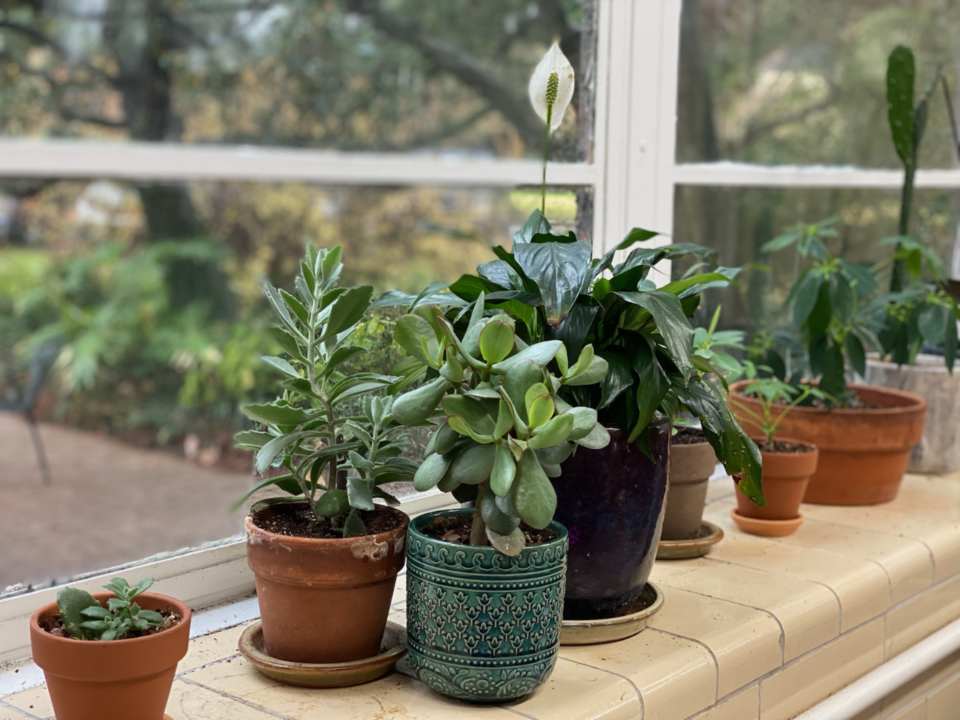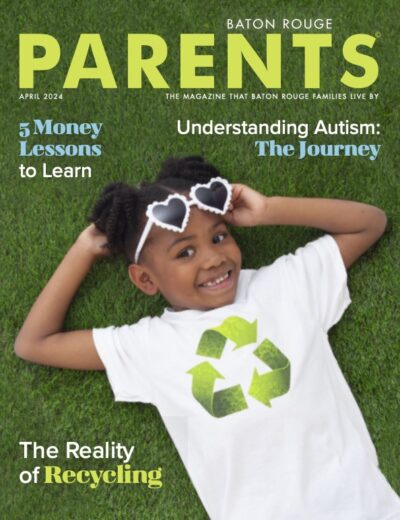
Clean Air, Clear Minds: The Benefits of Having Houseplants
It’s no secret that plants play a vital role in our natural environment for many different reasons, from taking in carbon dioxide and releasing oxygen for us to breathe to providing insects with a safe haven. Plants are essential for keeping our natural world moving, living, and breathing. Bringing plants inside our homes can improve the air quality and our psychological and physical health and further children’s understanding of the natural world around us.
Cleaning Our Air
“We know that plants also clean air so they can remove air pollutants and particulates,” says Heather Kirk-Ballard, an assistant professor of Consumer Horticulture at Louisiana State University. “They remove carbon dioxide, particulates, benzene, and up to 90 percent of formaldehyde.”
The United States Environmental Protection Agency (EPA) states that particulates, benzene, and formaldehyde are volatile organic compounds (VOCs). “VOCs include a variety of chemicals, some of which may have short- and long-term adverse health effects…Paints, varnishes and wax all contain organic solvents, as do many cleaning, disinfecting, cosmetic, degreasing, and hobby products.”
Not only do plants provide oxygen, but houseplants also clean the air we breathe in our homes by removing VOCs that come from various products we use around our house.
If you’re not persuaded to add a houseplant to your home, let’s discuss the psychological and physiological benefits.
Physical and Mental Benefits
“They can also help with our well-being. Indoor plants can simulate the psychological and the physiological relaxation response,” says Kirk-Ballard. “In fact, in schools, they’ve shown that it can improve test grades.”
Research shows that workplaces with indoor plants positively affect individuals, from reducing fatigue to inspiring creativity. In a classroom full of students, plants simulating a calming response can help children that struggle to focus. The National Initiative for Consumer Horticulture (NICH) mentions the greener the play area/learning environment is for children, the less severe the symptoms of ADD are.
“Just looking at pots of flowers and plants makes people more relaxed and aware. A study of EEG (electrical brain activity) measurements shows more relaxation when viewing greenery compared to looking at a concrete structure,” states the NICH.
The same effects are seen in an office. A plant nearby can help lower workers’ blood pressure and reduce stress, which in turn, makes it easier to focus on a task. Plants indoors bring a comforting and professional feel to the environment, and according to the NICH, “workers in the office with plants felt more comfortable, productive, healthier and creative…People in offices with plants and windows have increased job satisfaction and report a higher quality of life.”
In hospitals, patients with rooms containing plants took fewer pain relievers than patients who didn’t have plants.
“Plants used as part of room décor reduce the stress of hospital patients and lower their blood pressure. New breast cancer patients were better able to tolerate life’s disruptions caused by the diagnosis, surgery, and treatments through interacting with nature,” states the NICH.
Children + Plants
We all know that children love to ask questions, and sometimes we don’t even know the answer to their inquiries. Having a houseplant can spark interest in your child and get them excited about nature, science, and maybe even vegetables!
By exposing your kiddo to plants, they will begin to have a deeper understanding of the world around them, which includes beginning to understand health and wellness. For example, if one of the houseplants is wilting or losing color, explain to your child why this is happening and what steps can help revive the plant (more or less water and sunshine or trimming dead leaves).
When your child is caring for a houseplant, explain to them that plants harness energy from the sun. Depending on their age, explain photosynthesis and its impact on insects and other living things. Kirk-Ballard also suggests talking to children about edible plants because that can be a fun way for them to become excited about nature and science.
Teaching children about plants opens the door to many other learning opportunities, like why it’s important to recycle plastic or how vegetables and fruits have natural sugars that energize us.
There are several reasons why we should have household plants, including having healthy and clean air to breathe, improving our psychological and physiological health, and exposing children to the natural world. In May, many grocery stores and plant shops have beautiful flowers and plants to choose from. So next time you head to the store, bring your kiddo and have them pick out a plant to take care of.
Best Houseplants to Start With
To start your kiddos off with an easy, low-maintenance plant, consider buying a Remo’s Tongue (Snake Plant), Mother in Law’s Tongue, Swiss Cheese Plant, or a ZZ plant. These plants tolerate low sunlight and don’t require very much water to flourish. Another easy-starter plant is Aloe Vera, which would be especially fun for kids when they get a sunburn and break off a leaf to help. The carnivorous plants like Venus Fly Trap, Pitcher, and Sun-dew Plants aren’t the easiest to care for, but kids will love the exotic plant.





